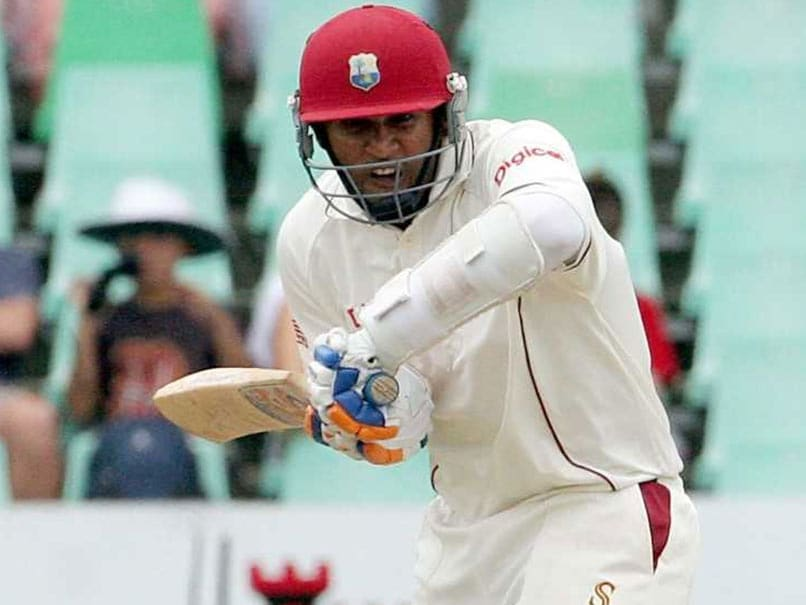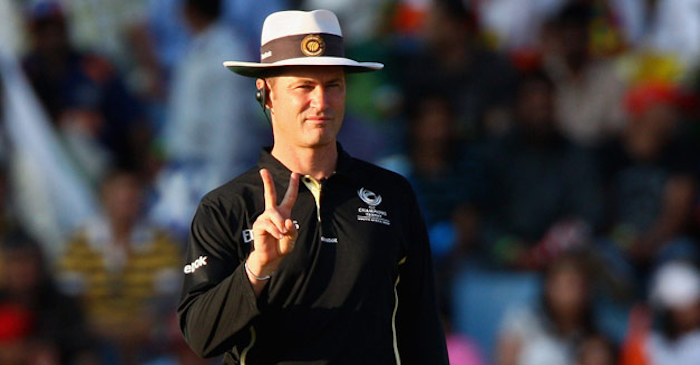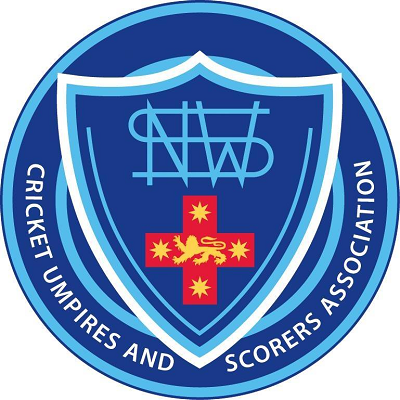About Me
Simon Taufel
Current Rating: 5 / 5
Business Coach Integrity Values Leadership
www.integrityvaluesleadership.com
Central Coast, NSW, Australia
Former International Cricket Umpire
I'm focused on supporting businesses, educational institutions and sporting bodies who have a desire to reach their potential and improve performance through targeted and tailored learning sessions. Together, we strive to match talent with opportunity and the required skills. There is little point in talking about getting better, we need to get very specific and work hard/smart to get better outcomes.
Development topics that can be facilitated include leadership, integrity, culture / behaviours, managing conflict, growth mindset, coping with pressure, preparation, mental toughness (resilience), teamwork, professionalism and attitude.
I'm focused on supporting businesses, educational institutions and sporting bodies who have a desire to reach their potential and improve performance through targeted and tailored learning sessions. Together, we strive to match talent with opportunity and the required skills. There is little point in talking about getting better, we need to get very specific and work hard/smart to get better outcomes.
Development topics that can be facilitated include leadership, integrity, culture / behaviours, managing conflict, growth mindset, coping with pressure, preparation, mental toughness (resilience), teamwork, professionalism and attitude.
Partner Sponsors
My Activity
answered
Q: There were only 76 overs bowled on day one of the 5th test between Australia and India at the SCG.
I’d like to ask why and how teams are allowed to get away with such low over rates when 90 overs are supposed to be bowled in a day.
If I’m paying to go to the ground or a subscription fee to watch 90 overs, why are we denied 14 overs of play.
Does anyone know why the umpires aren’t speeding the game up or what the ramifications are to the teams?
I’d like to ask why and how teams are allowed to get away with such low over rates when 90 overs are supposed to be bowled in a day.
If I’m paying to go to the ground or a subscription fee to watch 90 overs, why are we denied 14 overs of play.
Does anyone know why the umpires aren’t speeding the game up or what the ramifications are to the teams?
A: I can understand the frustration. Basically it all comes down to time allowances that are given the fielding side. They get 2mins for every wicket that falls (except immediately before an interval), 4 mins for every drinks break, allowances for DRS and umpire referrals (use of technology), sight screen delays, ground repairs and over 20mins on this day for treatment to player injuries.
On day 1 of the Sydney Test this amounted to around 45mins of allowances given to the fielding team’s over rate calculation. Take some of those allowances away and the fielding team has to speed up. Don’t forget we also lose 2 overs for the innings change!
I hope this helps. Cheers. Simon
On day 1 of the Sydney Test this amounted to around 45mins of allowances given to the fielding team’s over rate calculation. Take some of those allowances away and the fielding team has to speed up. Don’t forget we also lose 2 overs for the innings change!
I hope this helps. Cheers. Simon
answered
Q: If you could make one rule change in any format of the game what would it be?
A: As a member of the MCC Laws sub-committee, I'm an advocate for the the removal of leg byes. The game is between bat and ball. Why should the batting team benefit from getting runs when they cannot hit the ball and it hits the body?
answered
Q: Who is the one player from Sydney Grade Cricket who played between 1980 and 2000 you’d want as the first player selected if you had the opportunity to start your own NSW Premier first grade cricket team?
A: A toss up between Tony Clark and Scott Thompson. Both committed, gutsy, talented and “never give up” attitude.
answered
Q: If a batter goes to pull out of their stance as the bowler goes into their delivery stride but still plays a shot is it right for the umpire to call a dead ball?
A: As long as the batter satisfies the umpire that they are not ready (before they receive the ball), then the umpire should call and signal dead ball. The batter is therefore immune from being dismissed.
If however, the batter plays a shot at the ball (after pulling away) the umpire will not call dead ball as the batter has brought themselves back into the game - they can therefore score runs of that delivery and also be dismissed.
If however, the batter plays a shot at the ball (after pulling away) the umpire will not call dead ball as the batter has brought themselves back into the game - they can therefore score runs of that delivery and also be dismissed.
answered
Q: In Western Suburbs District Cricket Club 3rd Grade game against Sydney Cricket Club one of our umpires was Geoff Garland. Geoff is 81 years of age.
Geoff first involvement with senior cricket in New South Wales began in 1961 and he’s been a players, umpire, and mentor ever since.
He started umpiring at the age of 50 and has umpired over 450 games for the Sydney Cricket Association. Geoff was awarded Life Membership of New South Wales Cricket Umpires and Scorers Association in 2019.
Saturday was a one day 50 over game and Geoff was at the top of his game. He engaged at the appropriate times, didn’t go looking for unnecessary noise and communicated and managed the game terrifically well. And he did it all with a smile.
It’s wonderful to see Geoff still umpiring as he’s a wonderful role model for all umpires and players. It was even better to see to see him so spritely and enthusiastic.
I dip my lid Geoff.
Geoff first involvement with senior cricket in New South Wales began in 1961 and he’s been a players, umpire, and mentor ever since.
He started umpiring at the age of 50 and has umpired over 450 games for the Sydney Cricket Association. Geoff was awarded Life Membership of New South Wales Cricket Umpires and Scorers Association in 2019.
Saturday was a one day 50 over game and Geoff was at the top of his game. He engaged at the appropriate times, didn’t go looking for unnecessary noise and communicated and managed the game terrifically well. And he did it all with a smile.
It’s wonderful to see Geoff still umpiring as he’s a wonderful role model for all umpires and players. It was even better to see to see him so spritely and enthusiastic.
I dip my lid Geoff.
A: It's so great to see a community sports official appreciated for their unobtrusive contribution.
answered
Q: If a right arm off spinner is bowling around the wicket to a right-hand batter and the batter attempts a reverse sweep does the shot negate the need for the ball to be pitching in line with the stumps for the batter to be given out lbw.
In other words can the batter be given our lbw if the ball pitches outside leg stump just because the batter looks to play a reverse sweep.
In other words can the batter be given our lbw if the ball pitches outside leg stump just because the batter looks to play a reverse sweep.
A: The Laws of Cricket (and LBW) apply regardless of what shot the batter plays.
For the sake of the reverse sweep or switch hit, the batters leg stump is determined by their stance when the bowler starts their run up. So, if the batter is a right hander as the bowlers starts to run, they remain a right hander (and leg stump is the same) regardless of the shot they play.
Therefore the ball cannot pitch outside their leg stump for the bowler to be given a LBW decision (also regardless of their shot).
I hope this helps.
For the sake of the reverse sweep or switch hit, the batters leg stump is determined by their stance when the bowler starts their run up. So, if the batter is a right hander as the bowlers starts to run, they remain a right hander (and leg stump is the same) regardless of the shot they play.
Therefore the ball cannot pitch outside their leg stump for the bowler to be given a LBW decision (also regardless of their shot).
I hope this helps.
answered
Q: The batting gloves worn by former Indian cricket captain Virat Kohli during his explosive innings of 82 not out off 53 balls in the ICC T20 World Cup match against Pakistan at the Melbourne Cricket Ground (MCG) last year garnered a whopping $5,750 (approximately Rs 3.2 lakhs). This impressive sum was achieved during the Chappell Foundation's 6th Annual Dinner, which took place at the Sydney Cricket Ground on September 13.
Read more -
Read more -
https://economictimes.indiatimes.com/news/new-updates/virat-kohlis-batting-gloves-fetch-5750-at-chappell-foundations-annual-dinner/articleshow/103749316.cms?from=mdr
A: It was a great night and an exceptional fundraising outcome for The Chappell Foundation. We don't get to see the three Chappell brothers together too often. Just so special how sport (cricket) brings people together.
question
Q: Was Jonny Bairstow’s dismissal at Lords a breach of the Spirit of Cricket? This is a question I have been inundated with, so I thought it best to share my thoughts publicly by asking everyone a question or eight to consider…
1. Have you seen any umpire tell a fielding side that the keeper standing back is not allowed to attempt a stumping?
2. Was there a complaint from anyone when Bairstow tried to stump Marnus exactly the same way in the first innings?
3. What has Jonny Bairstow said about his dismissal? He has been very quiet. Why?
4. My experience is when people don’t like a dismissal under the Laws of Cricket, they cite the Spirit of Cricket to support their view.
5. Which part of the codified Preamble (the Spirit of Cricket) was breached by the fielding side?
6. What did the fielding side do in effecting a legitimate dismissal that unfairly impacted the ability of the batter in their attempt not to be dismissed? (Did they run into him or distract him or prevent him making good his ground?)
7. Should a batter be immune from dismissal as per the Laws by simply being negligent (and leaving his ground too early)?
8. Did England retire Ben Duckett when they disagreed with the Starc catch decision as per the Laws and umpires’ decision?
The hypocrisy and lack of consistency from some people and groups is quite interesting and concerning for the future of our game.
Maybe I am the odd one out here?
The good news is we are actively engaged with Test cricket, the best form of the game.
1. Have you seen any umpire tell a fielding side that the keeper standing back is not allowed to attempt a stumping?
2. Was there a complaint from anyone when Bairstow tried to stump Marnus exactly the same way in the first innings?
3. What has Jonny Bairstow said about his dismissal? He has been very quiet. Why?
4. My experience is when people don’t like a dismissal under the Laws of Cricket, they cite the Spirit of Cricket to support their view.
5. Which part of the codified Preamble (the Spirit of Cricket) was breached by the fielding side?
6. What did the fielding side do in effecting a legitimate dismissal that unfairly impacted the ability of the batter in their attempt not to be dismissed? (Did they run into him or distract him or prevent him making good his ground?)
7. Should a batter be immune from dismissal as per the Laws by simply being negligent (and leaving his ground too early)?
8. Did England retire Ben Duckett when they disagreed with the Starc catch decision as per the Laws and umpires’ decision?
The hypocrisy and lack of consistency from some people and groups is quite interesting and concerning for the future of our game.
Maybe I am the odd one out here?
The good news is we are actively engaged with Test cricket, the best form of the game.
answered
Q: Bowlers get in trouble when they follow through down the wicket into the danger zone and scuff the wicket.
David Warner is batting so far out of the crease in the 2nd innings of the 2nd Ashes test and must be close to the same danger zone.
Can batters get in trouble for scuffing the wicket by batting so far out of the crease?
David Warner is batting so far out of the crease in the 2nd innings of the 2nd Ashes test and must be close to the same danger zone.
Can batters get in trouble for scuffing the wicket by batting so far out of the crease?
A: Just building on the good answer from Tim here.
This Law regarding batters going into the protected area of the pitch was changed / added to in 2017. It was felt there was not enough guidance and empowerment given to umpires previously to take action against batters who took their stance too far outside of the crease and caused damage to the protected area in playing shots.
Now, either umpire can stop the batter from going into the protected area if they take their stance so far down the pitch that playing a shot sees them continually in the same area the bowlers are not allowed.
The law makers continually review the balance between bat and ball and fair and unfair play. This change brings more equality back to how both bowlers and batters are treated regarding damaging the pitch.
This Law regarding batters going into the protected area of the pitch was changed / added to in 2017. It was felt there was not enough guidance and empowerment given to umpires previously to take action against batters who took their stance too far outside of the crease and caused damage to the protected area in playing shots.
Now, either umpire can stop the batter from going into the protected area if they take their stance so far down the pitch that playing a shot sees them continually in the same area the bowlers are not allowed.
The law makers continually review the balance between bat and ball and fair and unfair play. This change brings more equality back to how both bowlers and batters are treated regarding damaging the pitch.
question
Q: The best earn the right to get it wrong
In September 2019 I met up with former West Indies opening batsman Darren Ganga at the Hero CPL T20 event in the Caribbean. He is one of the commentators adding insights for the millions of viewers.
When he saw me, the smile on his face was a big as one of Chris Gayle’s sixes from his last century at Warner Park in St Kitts. Darren and I have a very good relationship built on respect and trust as player and umpire. The relationship got off to a rocky start though.
It was back in the Australian season of 2000/2001, not long after I umpired my first Test at the MCG at the age of 29.
In September 2019 I met up with former West Indies opening batsman Darren Ganga at the Hero CPL T20 event in the Caribbean. He is one of the commentators adding insights for the millions of viewers.
When he saw me, the smile on his face was a big as one of Chris Gayle’s sixes from his last century at Warner Park in St Kitts. Darren and I have a very good relationship built on respect and trust as player and umpire. The relationship got off to a rocky start though.
It was back in the Australian season of 2000/2001, not long after I umpired my first Test at the MCG at the age of 29.
https://www.cricconnect.com/profile/92/simon-taufel/blog/1079/the-best-earn-the-right-to-get-it-wrong
blog post
In September 2019 I met up with former West Indies opening batsman Darren Ganga at the Hero CPL T20 event in the Caribbean. He is one of the commentators adding insights for the millions of viewers ...
question
Q: Having spent over two decades studying the world’s best in different endeavours, to see what they did to get to world class, I don’t believe the “formula” or “ingredients” have changed. My development as an umpire on the cricket field from grassroots to the international level, followed by several years in training, coaching and administration, has taught me a lot about myself and what it takes to get to number one. I wanted to share my successes, failures, and learnings with a broader audience. For those who I cannot meet face to face, I'd love to have a conversation with you via this book. I want to share some of the highs, the lows and critical takeaways, about what it takes to get to world-class, stay there and exit on your own terms.
https://www.cricconnect.com/profile/92/simon-taufel/blog/1060/finding-the-gaps-simon-taufel
blog post
Having spent over two decades studying the world’s best in different endeavours, to see what they did to get to world class, I don’t believe the “formula” or “ingredients” have changed. ...
question
Q: My Ashes – India v Pakistan
“Aren’t you disappointed you never umpired an Ashes Test?” It’s a question I’m asked often. My answer is “no” and “yes”. “Yes” because for most of my international career Australia were one of the best sides in the world and I wanted to test my skills against the best. “No” because there is another iconic series in world cricket that’s right up there for intensity and pressure, India v Pakistan.
It’s a series that has a similar passion of rivalry and a focus on the outcome by the fans that goes beyond the scoreboard..
I’ve lost count of how many India Pakistan matches I have umpired. It wasn’t long after joining the ICC Elite Panel that I was appointed to my first India Pakistan series in Pakistan. It was early 2004 and I was with my good mate and umpiring legend, the late David Shepherd.
“Aren’t you disappointed you never umpired an Ashes Test?” It’s a question I’m asked often. My answer is “no” and “yes”. “Yes” because for most of my international career Australia were one of the best sides in the world and I wanted to test my skills against the best. “No” because there is another iconic series in world cricket that’s right up there for intensity and pressure, India v Pakistan.
It’s a series that has a similar passion of rivalry and a focus on the outcome by the fans that goes beyond the scoreboard..
I’ve lost count of how many India Pakistan matches I have umpired. It wasn’t long after joining the ICC Elite Panel that I was appointed to my first India Pakistan series in Pakistan. It was early 2004 and I was with my good mate and umpiring legend, the late David Shepherd.
https://www.cricconnect.com/profile/92/simon-taufel/blog/751/my-ashes-ndash-india-v-pakistan
question
Q: The advice I would offer an aspiring young umpire is to be patient.
Do the apprenticeship and umpire as many matches as you can. Find a good coach and mentor. Make as many mistakes as you can at the lowest levels and learn quickly (from others). Never worry about matches you should be umpiring, just umpire that match in front of you the best you can and let the selectors take care of everything else. Focus on your game and what you can do – above all, enjoy it or find something else to be passionate about.
Do the apprenticeship and umpire as many matches as you can. Find a good coach and mentor. Make as many mistakes as you can at the lowest levels and learn quickly (from others). Never worry about matches you should be umpiring, just umpire that match in front of you the best you can and let the selectors take care of everything else. Focus on your game and what you can do – above all, enjoy it or find something else to be passionate about.
blog post
“Aren’t you disappointed you never umpired an Ashes Test?” It’s a question I’m asked often. My answer is “no” and “yes”. “Yes” because for most of my international career Aus ...
answered
Q: If a bowler brushes and disrupts the stumps with their hands or legs as they’re in their delivery stride when bowling the ball, it’s now a No Ball and not a Dead Ball. What is the reason behind the change to the laws?
A: Hello David
As per the MCC Laws, a run out is a run out (accidentally or on purpose). In the situation as above that you have described, if the non striker was out of their ground (and there was an appeal - not in your scenario), then upon appeal, they would be out, run out. The ball would then be dead with the dismissal and whatever the striker did wouldn't count.
The ball would not be a No ball as the run out was effected before the front foot landed - even though the ball was subsequently delivered.
I'd also point out here that the ICC do NOT follow the MCC Laws in this case when the ball is delivered after a valid (accidental) run out. The ICC deem that an accidental run out in this fashion is not a dismissal and when this happens I look forward to see how they are going to explain it to everyone!
Hope all that helps. Simon.
As per the MCC Laws, a run out is a run out (accidentally or on purpose). In the situation as above that you have described, if the non striker was out of their ground (and there was an appeal - not in your scenario), then upon appeal, they would be out, run out. The ball would then be dead with the dismissal and whatever the striker did wouldn't count.
The ball would not be a No ball as the run out was effected before the front foot landed - even though the ball was subsequently delivered.
I'd also point out here that the ICC do NOT follow the MCC Laws in this case when the ball is delivered after a valid (accidental) run out. The ICC deem that an accidental run out in this fashion is not a dismissal and when this happens I look forward to see how they are going to explain it to everyone!
Hope all that helps. Simon.
answered
Q: In a game on the weekend the batsman went to play a cut shot off our spinner and their bat hit the wickets keepers’ glove on two occasions. He hit the ball but for no runs. The keeper impacted the shot so should it be a no ball, dead ball or just part of the game?
A: If you apply Law 27.5 (Restrictions on the actions of the wicket keeper) strictly, an accidental interference of this nature should result in the umpire calling and signaling dead ball and the ball not counting as one in the over (ie. rebowl the ball). If the action or interference was deliberate, then more serious action is available to the umpire.
answered
Q: If a bowler brushes and disrupts the stumps with their hands or legs as they’re in their delivery stride when bowling the ball, it’s now a No Ball and not a Dead Ball. What is the reason behind the change to the laws?
A: Ben Treloar is quite right about when it came into being - it was as a result of Stephen Finn. The problem the onfield umpires had was trying to determine if the breaking of the stumps at the bowler's end was distracting the batter and should they call dead ball or not (to protect the batter from dismissal if they were). They took a conservative view and thought it best to call dead ball just in case. The bowler broke the stumps so many times, it was interrupting the flow of the match.
The Law makers decided that this act was no longer about distraction but unintentional unfair play. They decided the best deterrent for bowlers to keep away from the stumps, make it easier for the umpires to judge, and improve the flow of the game, was to penalise/deter bowlers and apply a No ball to such deliveries. On the whole, it seems to have had the desired effect.
Cheers, Simon T.
The Law makers decided that this act was no longer about distraction but unintentional unfair play. They decided the best deterrent for bowlers to keep away from the stumps, make it easier for the umpires to judge, and improve the flow of the game, was to penalise/deter bowlers and apply a No ball to such deliveries. On the whole, it seems to have had the desired effect.
Cheers, Simon T.

























